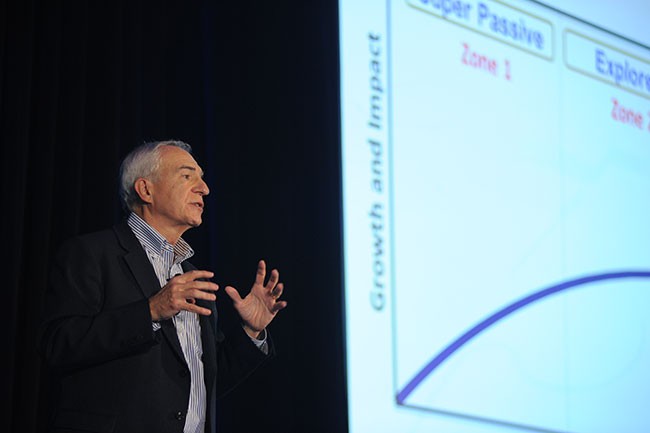Lou Adler’s 5 Rules for Recruiting Passive Candidates
For simplicity, let’s categorize all job-hunters into one of these four categories:
- Those who are looking
- Those who are starting to look
- Those who are thinking about looking
- Those who aren’t even thinking about looking
Unfortunately, most companies treat everyone as if they’re in the first category – actively looking. They then scratch their heads and collectively wonder why they’re not seeing or hiring enough strong people.
The reason is that, more than 75% of the fully-employed LinkedIn members are not actively looking. This number jumps to over 90% for high-demand positions and for the strongest talent. These people (the best people) don’t need to look. They’ll be found by aggressive recruiters and former co-workers.
So, unless the supply of great talent exceeds the demand in your candidate pool, the likelihood of hiring a top person is remote. To attract top performers, companies need to structure their hiring processes on the premise that they need to attract the best people, not weed them out. This requires a change in strategy, a change in attitude, aggressive recruiters working fewer requisitions and fully-engaged hiring managers who are held responsible for the quality of the people they hire.
As long as recruiters and hiring managers follow the 5 simple rules below, breaking the talent ceiling at your company is possible.
5 Rules for Recruiting the Best Passive Candidates
1. Define the job before defining the person.
A list of required skills, experiences, competencies, personal attributes and academics is not a job description. It’s a person description. The first step in breaking the talent ceiling and attracting the best passive candidates is to define what the person must do to be successful in the role. This is called a performance-based job description. Preparing these types of job descriptions is essential, since the best candidates will use this information to decide if they’re interested in considering your job as a potential career move.
2. Don’t sell the job, sell the discussion.
Most people will engage in a career conversation with a recruiter (or hiring manager) on the basis that the position represents a potential career move. Unfortunately, as soon as the person expresses any interest, most recruiters start pitching the job. Worse, they have little understanding of the real job and use generalities and hyperbole to make their case. It’s better to go slow. This means starting with a career needs analysis to determine what the person would require to seriously consider switching jobs. If your job offers meets their needs, suggest an exploratory phone call with the hiring manager to learn more.
3. Don’t sell the candidate, get the candidate to sell you.
For those not looking, changing jobs is a big decision and it takes extra time for the person to evaluate all options. When conducting the Performance-based Interview, look for gaps between the performance-based job description and what the person has accomplished. These include factors like team size, scope of responsibility, growth rates, visibility and impact. Then, mention these to the candidate as potential concerns on your part as well as areas for growth from the candidate’s perspective. You’ll know you have successfully recruited the formerly passive candidate when he/she attempts to convince you as to why they’re qualified and expresses interest in moving to the next step.
4. Close on career growth, not compensation maximization.
Before negotiating an offer, I ask candidates if they’d really want the job if it weren’t for the salary and compensation plan. Most say yes. I then ask them to tell me why. If they’re not highlighting the work itself and the career growth opportunity, it’s unlikely they’ll accept your offer. Or, if they do, they’ll be dissatisfied in a few months. Candidates need to be convinced that your long-term opportunity is superior to anything else they’re considering. If not, they’ll take your offer for the wrong reasons or take some other job because it offered more money, was more convenient, or had a better title.
5. Hold hiring managers responsible for the quality of the people they hire.
All companies consider hiring the best people a strategic priority. But, this is mere talk if the people making the hiring decision are not held accountable for the people they hire. Most managers tend to be conservative and hire for the short-term, emphasizing skills and experience over performance and potential. This is slowly starting to change. More companies are now recognizing that hiring managers need to be formally measured on the quality of the people they hire and develop.
Because 90% of the best people for high-demand and skilled positions are not actively looking, companies need to rethink their talent strategies and processes from top to bottom in order to hire these people. This starts with improving how jobs are defined, the quality of the recruiters involved, and the role and responsibility of the hiring manager. The big “aha” in all this is pretty simple: you can’t hire passive candidates using a process designed to hire active candidates.
Topics: Passive candidate recruiting
Related articles




